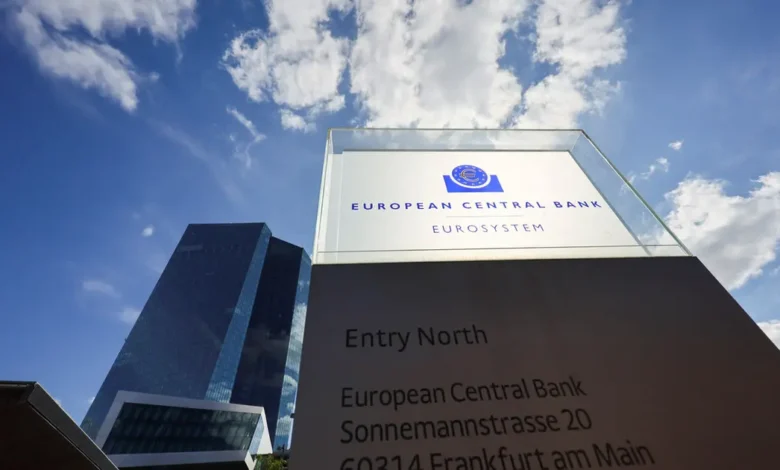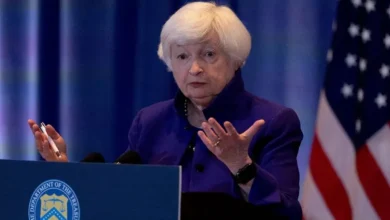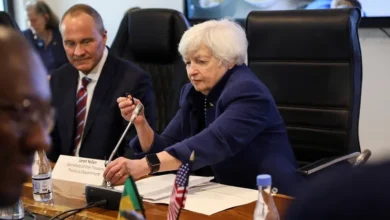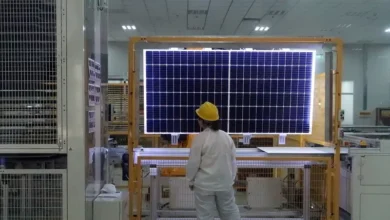Eurozone economy shrinks as inflation falls further

The eurozone economy shrank slightly in the third quarter, hurt by the European Central Bank’s painful rate-hiking campaign, but inflation slowed to its lowest level in more than two years, data showed Tuesday.
The EU’s official data agency said the 20-country single currency zone’s economy contracted by 0.1 percent over the July-September period, after recording only 0.2 percent growth in the second quarter.
Consumer price inflation in the eurozone has slowed to 2.9 percent, Eurostat data for October showed Tuesday, the lowest rate since July 2021 when it reached 2.2 percent.
The figure is down from 4.3 percent in September and lower than predicted by analysts who had expected inflation to remain above three percent.
The data reflects the difficulties facing the eurozone including the cost-of-living crisis and concerns over the flagging demand in the global economy.
Although the eurozone has weathered the shocks from the coronavirus pandemic and the war in Ukraine, fears are growing over the economic effects of the Hamas-Israel war.
The inflation rate is, however, now closer to the ECB’s two percent target. Despite higher borrowing costs, the ECB remains steadfast behind its mission to tame red-hot inflation, and economists warned not to expect rate cuts any time soon.
But signs of weakness in the economy as well as ebbing price pressures prompted the ECB to leave interest rates unchanged earlier this month after raising them in each of their previous 10 meetings.
After the figures were published, Tomas Dvorak, senior economist at Oxford Economics, said the ECB could start cutting rates as early as April.
Analysts also warned against expecting further significant drops in the inflation rate.
“Looking ahead, inflation is unlikely to keep falling this quickly. Energy inflation will probably pick up a little in the next few months,” Jack Allen-Reynolds of Capital Economics wrote in a note.
No sharp recession’ risk
The data published by Eurostat on Tuesday showed, however, the whole 27-country European Union economy, including members who do not use the euro, fared better, growing by 0.1 percent in the quarter.
Germany’s economy shrank by 0.1 percent in the third quarter, while Austria also recorded a contraction of 0.6 percent.
France, the EU’s second biggest economic powerhouse, only grew by 0.1 percent, and Italy’s economy stagnated in the third quarter, the data showed.
Germany has been hit hard by elevated energy costs, a sluggish manufacturing sector and high interest rates designed to tame inflation.
ING economist Bert Colijn said there was a “realistic prospect” of a technical recession, two consecutive quarters of contraction, in the second half of 2023.
“It does look like the economic environment is weakening at the moment, but no sharp recession is in sight either,” Colijn said.
“The eurozone economy is set for a period of economic stagnation,” warned Oxford Economics economist Rory Fennessy.
Inflation slows
Eurozone inflation is down from its peak of 10.6 percent in October last year following Russia’s invasion of Ukraine which sent energy prices spiraling.
Core inflation, which strips out volatile energy, food, alcohol, and tobacco prices, also slowed to 4.2 percent in October from 4.5 percent in September, Eurostat said.
Core inflation is the key signal for the ECB.
Belgium and the Netherlands were the only countries where consumer prices fell, by 1.7 percent and 1.0 percent respectively in October, according to Eurostat figures.
Energy prices in the eurozone fell much further in October, sinking by 11.1 percent on the back of a drop of 4.6 percent the previous month.
The rise in food and drink prices also slowed down, reaching 7.5 percent in October compared with 8.8 percent in September, according to Eurostat.










